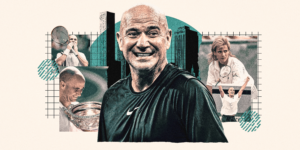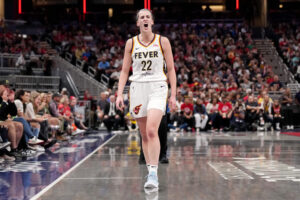Pete McCleave first heard about stem cells during his science degree in the 1990s. “I knew about them, I just didn’t know what they could be used for,” he says. “It all sounded very pee in the air.” It wasn’t until two decades later when McCleave was diagnosed with myeloma blood cancer that he came across stem cells again. This time he needed them to save his life.
“I’ve been told that the only chance I have, the best chance I have to see beyond the seven years I’ve been given [to live] was trying to find a stem cell donor,” he explains. His doctor reassured him that it would be easy to find a match because of his white European background. But nearly eight years later, he’s still looking.
“Although I don’t look it, my family comes from Southeast Asia, Macau,” he says. “I have this mixture of Chinese, Portuguese, Irish and English [heritage], which just makes it that much harder. But I just reflect so many people from different communities who just can’t find that stem cell donor match,” he says.
Every year, four out of 10 people in the UK do not find their match when they need a stem cell transplant. People who are not from white European backgrounds have a much harder time finding a match, and many die waiting. If you are from an ethnic minority background, you have just a 37% chance of finding a matching donor on the stem cell register, compared with 72% for those from white European backgrounds, according to blood cancer charity Anthony Nolan.
If you’re of mixed heritage, like McCleave, the chances are even slimmer.
Family usually can’t help either, because there’s only about 30% chance of finding a match with a parent, and 25% with a sibling. If a match is found, the likelihood is that it will come from an unrelated donor, relying on a stranger. And with only 3% of the UK population registered as donors, the odds are not in many people’s favor.
Lower availability of matches for people from ethnic minority backgrounds is partly because their human leukocyte antigen (HLA) types are less common, says Michael Gallagher, media officer at blood cancer charity DKMS.
HLA molecules are on the surface of most cells in the body, and help the immune system distinguish between foreign bodies and tissues that belong to the body. When two people “match”, they will share enough of the same HLA type for a donation to be possible.
Even if the stem cell registry was broadly representative of the UK population, people from ethnic minority backgrounds are more likely to struggle to find someone who shares enough of the same types to be a full match because there is a greater level of genetic diversity in these populations is. .
Helen and Arun Kumar’s daughter Elsie, who has Down syndrome, was 18 months old when she was diagnosed with myeloid leukemia. “As parents, you are devastated. Cancer for you is just such a scary word,” says Kumar.
Doctors warned that if Elsie relapsed, there wasn’t much they could do without a stem cell donor with a near-perfect match. Even then it was risky and because of Elsie’s mixed heritage they were told it was highly unlikely. “I remember we just collapsed on the bed in absolute tears and again we thought that was it.”
Elsie did relapse, but luckily a match was found in America. With a skeptical clear from consultants, her parents decided to go ahead. “Since then she’s just thrived, absolutely thrived…she’s a joy, just a very happy kid,” says Kumar. “This person saved our daughter’s life and gave us a chance to be a family.”
In certain communities, the idea of donating is marred by a distrust of medical professionals due to historical abuses. “For some people from African and Caribbean backgrounds, there’s a history of people being abused and experimented on without their knowledge … so there’s a real, understandable fear and mistrust,” says Gallagher.
Sabrina Jarrett, national development manager at the African Caribbean Leukemia Trust (ACLT), says this is in line with the myths and misconceptions that the organization tries to challenge through education and access to information. “People ask ‘will I contract anything by donating? Is it painful?’. These are all misconceptions.”
There may also be socio-economic conditions that play into the availability of donors. “Finance is everything. And it really is until you are out of health before you go to the doctors. You think about your kids, you think about your job, you think about what time you have and whether you have the means to get there,” Jarrett added.
McCleave has the 10,000 donors campaign in 2018 to get more people registered, and surpassed the target within five months. “We’re north of 110,000 people registered now and we’ve had 21 confirmed matches for patients, which is incredible,” he says. “I’m not really pinning my hopes on finding that stem cell match with me, just because it’s very, very, very unlikely and that’s fine.”






